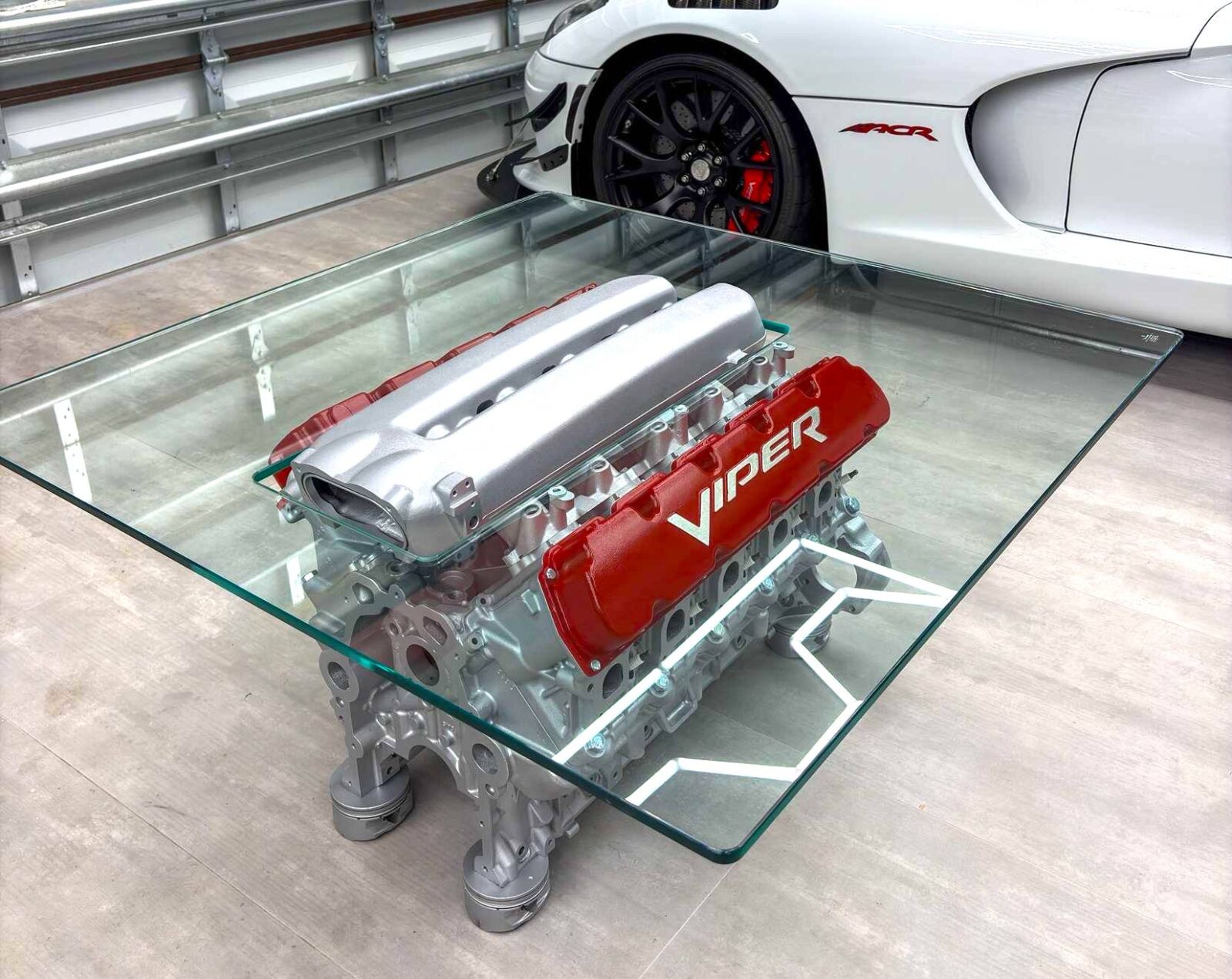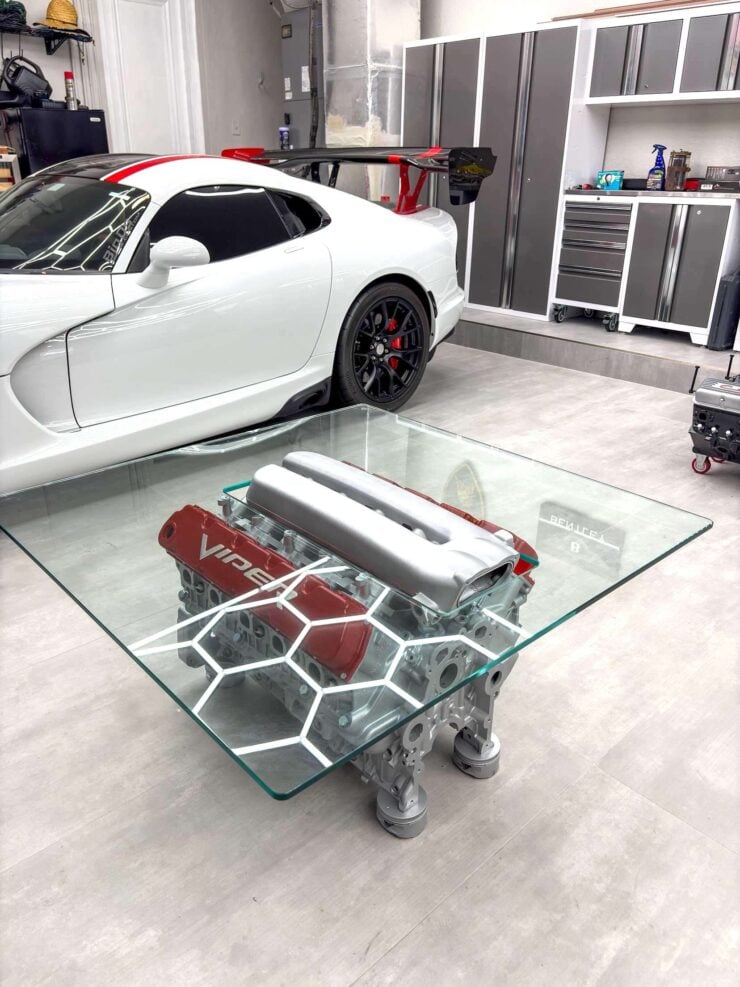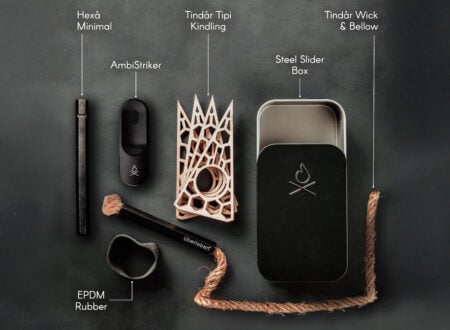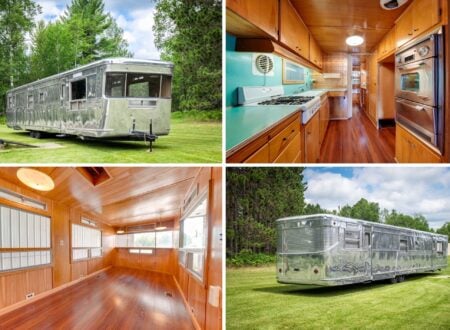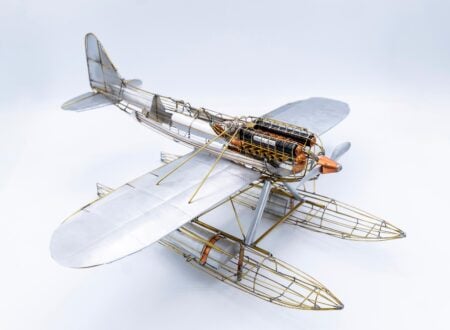This is a Dodge Viper V10 coffee table, it’s built around a ZB I Dodge Viper V10 engine and it sits on four piston feet, with a tempered glass tabletop that measures in at 44″ wide by 44″ long and rises 20″ from the ground.
Engine-based coffee tables like this have become increasingly popular in recent years, but V10 examples are understandably rare.
Above Video: This is Jeremy Clarkson’s review of the revised Dodge Viper, he was always unabashedly a big fan of the Viper series.
History Speedrun: The Dodge Viper V10
The Dodge Viper V10 engine was developed as the powerplant for one of the most memorable American sports cars of the modern age – the Dodge Viper. The engine’s history began in the late 1980s, when Chrysler’s then-president Bob Lutz, design chief Tom Gale, and Carroll Shelby set out to create a modern spiritual successor to the legendary Shelby Cobra of the 1960s.
The Viper’s engine was central to this vision as developing “just another American V8” was felt to be insufficient. Chrysler’s engineers began with the iron-block LA-series 360 V8 as a starting point but quickly realized that an entirely new engine would be required.
Lamborghini, then owned by Chrysler, was tasked with helping develop an all-aluminum V10 version. The result was an 8.0 liter naturally aspirated V10 engine that debuted in the 1992 Dodge Viper RT/10 – producing 400 bhp.
The First Generation V10: SR I
The first production version of the Viper V10, coded VIPER V10, had a displacement of 8.0 liters (488 cubic inches) and was built using an aluminum block and heads, which kept weight relatively low for such a gargantuan engine.
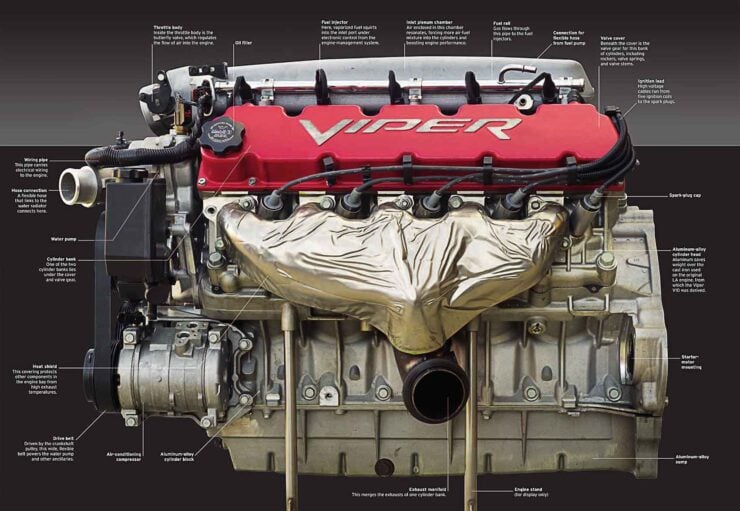

It produced 400 bhp at 4,600 rpm and 465 lb ft of torque at 3,600 rpm. The engine was mated exclusively to a 6-speed BorgWarner T56 manual transmission. While the engine wasn’t technologically sophisticated, it lacked overhead cams and variable valve timing for example, it did deliver raw performance and a broad torque curve – perfectly suiting the Viper’s aggressive nature.
The Second Generation V10: SR II
For the second-generation Viper GTS and the revised RT/10, the V10 was refined internally but retained the same displacement. Output increased to 450 bhp and 490 lb ft of torque thanks to higher-flow cylinder heads, a revised camshaft, and improved intake and exhaust tuning.
The engine received some internal strengthening, improved cooling, and minor electronic updates to improve reliability. These mods resulted in quicker acceleration and better driveability – without sacrificing the beast-like nature of the original Viper.
The Third Generation V10: ZB I
Chrysler significantly reworked the V10 for the third-generation Viper, increasing displacement to 8.3 liters (505 cubic inches). This version of the engine produced 500 bhp at 5,600 rpm and 525 lb ft of torque at 4,200 rpm, a significant bump over its predecessors.
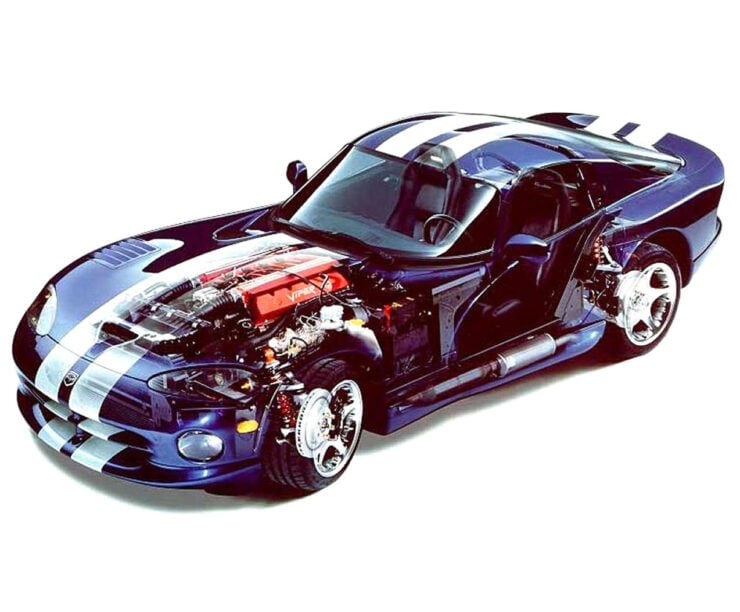

Improvements included new castings, revised heads, and a lighter, more compact engine architecture. That said, the valvetrain remained a pushrod design with two valves per cylinder. Improved materials allowed for a modest increase in redline and thermal efficiency.
Despite its traditional internal layout, it offered performance that was on par with far more advanced European rivals.
The Fourth Generation V10: ZB II
The 8.4 liter V10 marked the engine’s most significant revision – it was developed jointly by Chrysler’s SRT division and McLaren Performance Technologies, the engine featured new heads with larger valves, a forged steel crankshaft, variable valve timing on the exhaust side (a first for the Viper), and composite intake runners.
Output rose to 600 bhp at 6,100 rpm and 560 lb ft of torque at 5,000 rpm. These changes dramatically improved both top-end power and overall refinement while retaining the car’s now legendary brutality.
The Fifth Generation V10: VX
The final iteration of the Viper V10 made its debut in 2013, still displacing 8.4 liters but further refined still. Output was increased slightly to 640 bhp and 600 lb ft of torque. Later models, like the Viper ACR, pushed this up to 645 bhp.
The engine retained its naturally aspirated configuration, a rarity by that point, and used lightweight materials and state-of-the-art engineering to comply with then-current emissions regulations while still delivering the most aggressive performance profile possible.
This would be the last version of the Viper V10. Over the course of its production run power had increased from an already-high 400 bhp all the way up to 645 bhp – an increase of 47%. The displacement had risen by only 5%.
The End Of The Road
The Dodge Viper, and with it the Viper V10 engine, was discontinued in 2017. A combination of increasingly stringent safety regulations and declining sales led to the decision.
The Viper V10 remains the largest-displacement engine ever fitted to a production sports car and one of the last naturally aspirated, high-output engines in its class.
The Viper V10 Engine Coffee Table Shown Here
The coffee table you see here is based on the ZB I Dodge Viper V10 engine, that’s the 8.3 liter (505 cubic inch) version that is capable of 500 bhp when complete and installed in a car.
This engine includes the block, heads, and valve covers, but it has no internals to help keep the weight down. It sits on four piston feet, and the tempered glass tabletop has a cutout in the middle for the intake manifold to rise up through.
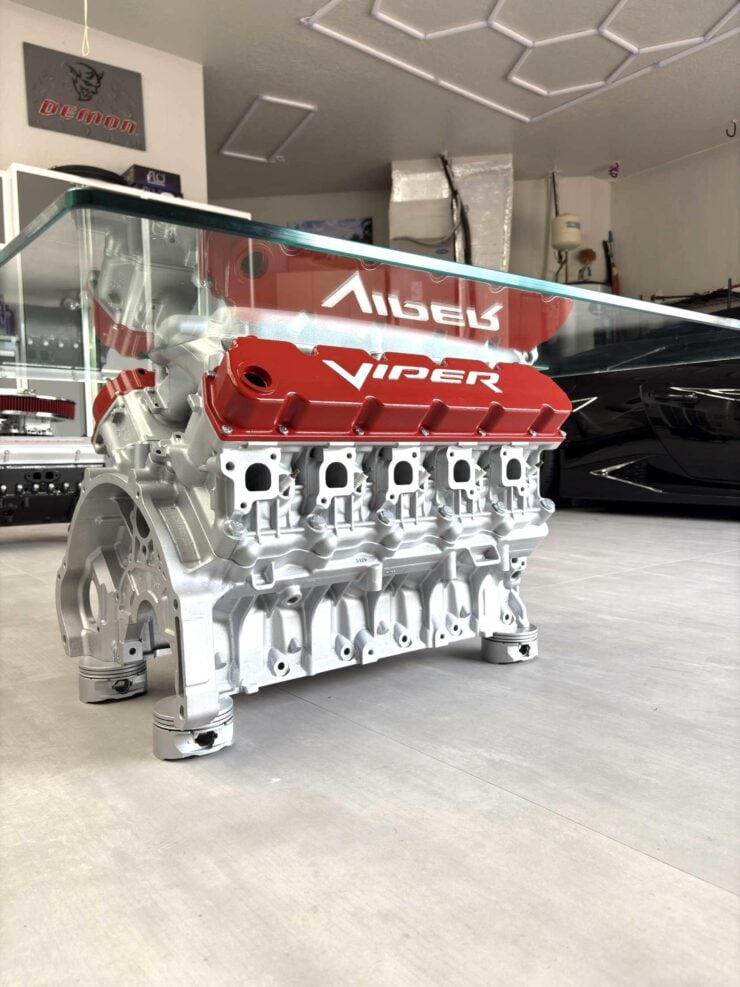

The tabletop is 44″ wide by 44″ long, and it sits on soft clear plastic spacers sitting directly on the intake manifold. The engine has been painted silver, with red valve covers that have “Viper” imprinted and painted in silver on each side.
It’s now being offered for sale out of Pompano Beach, Florida at no reserve and you can visit the listing here if you’d like to read more about it or place a bid.
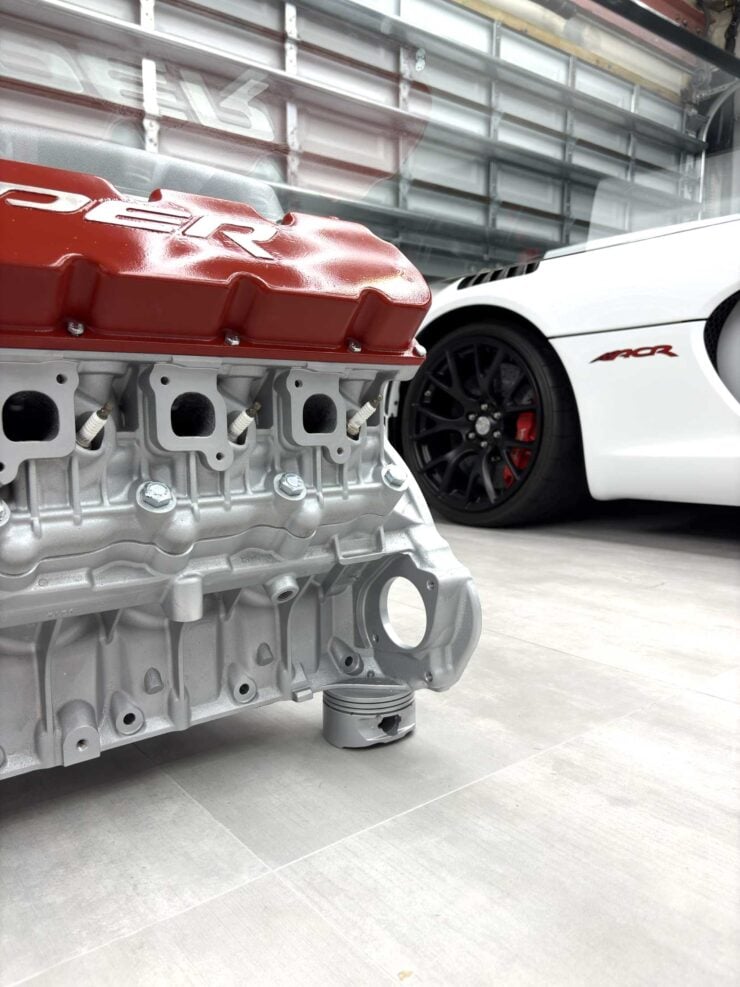
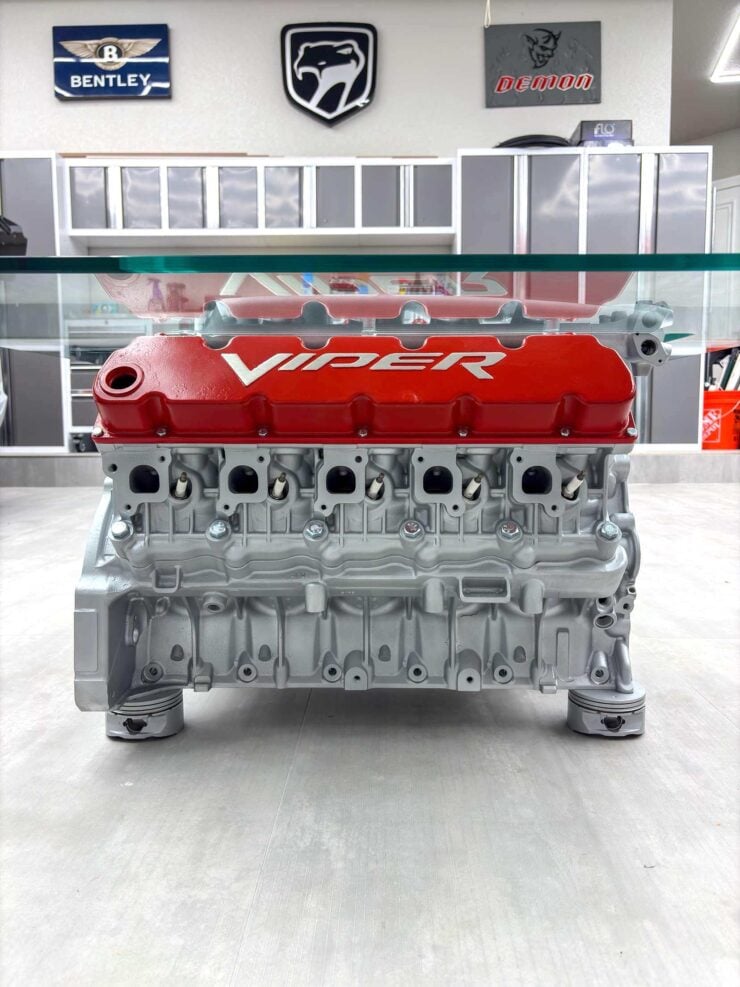
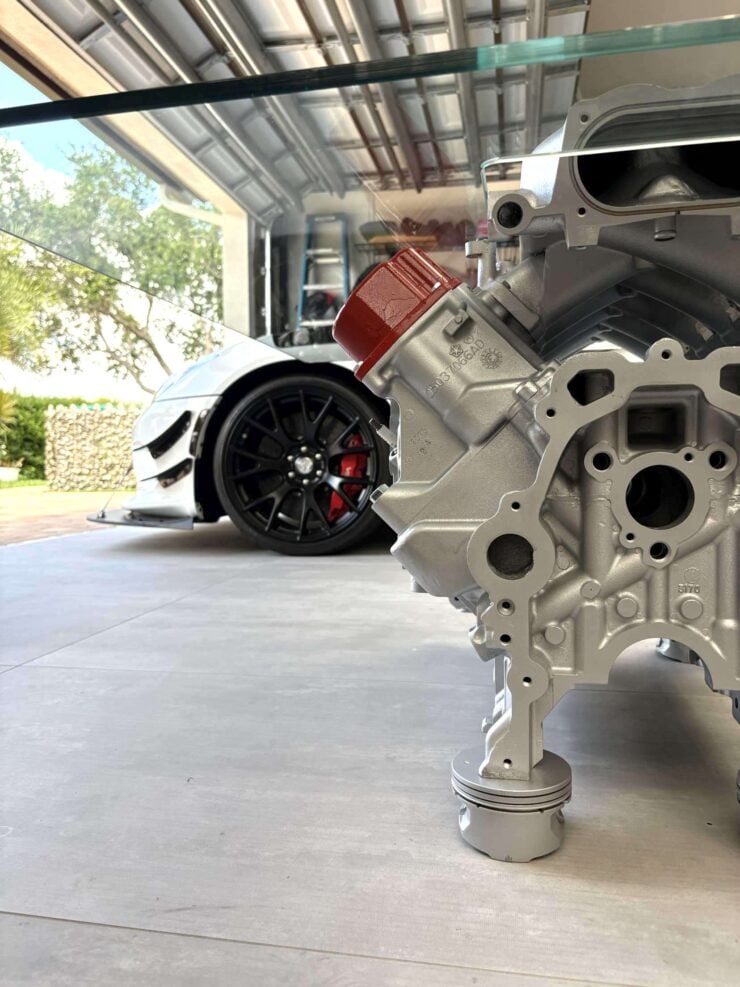
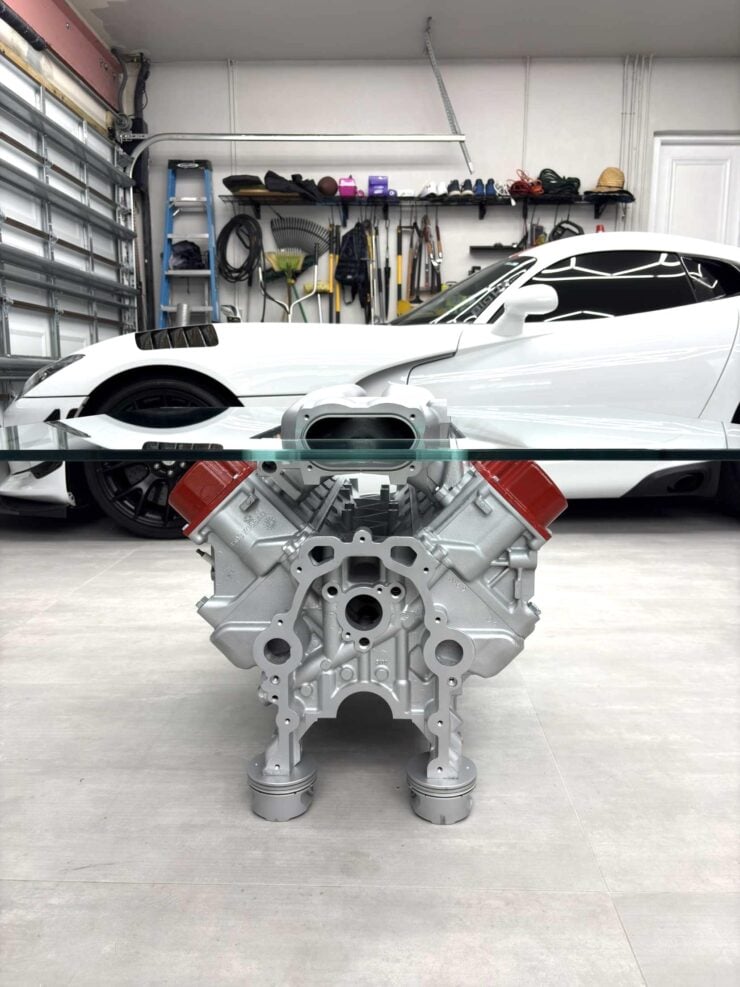
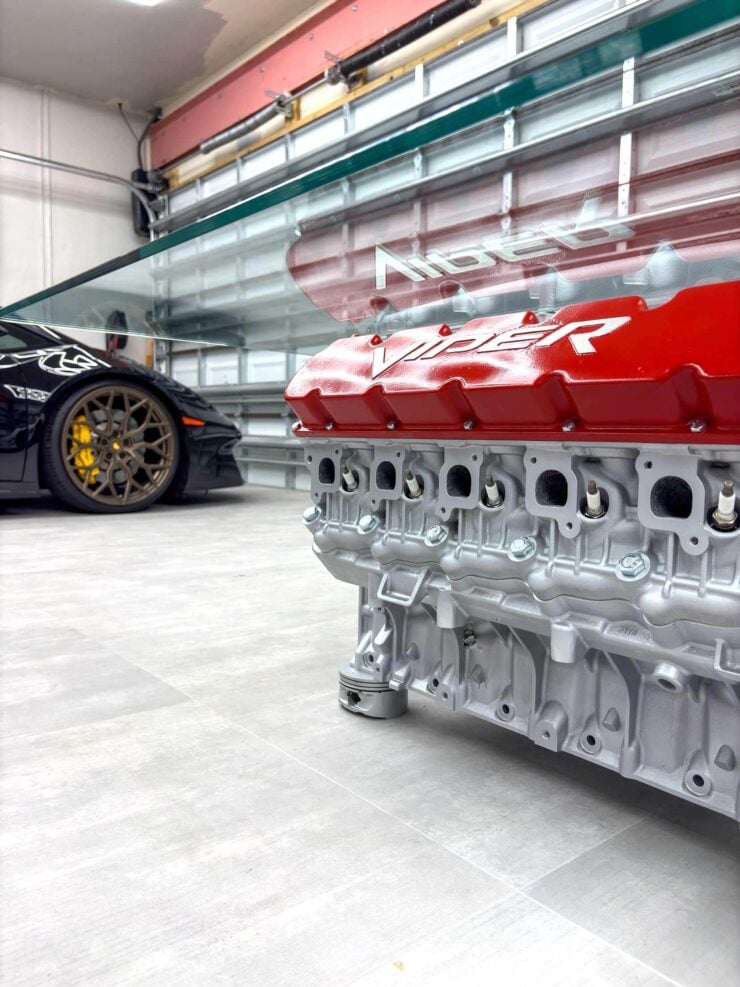
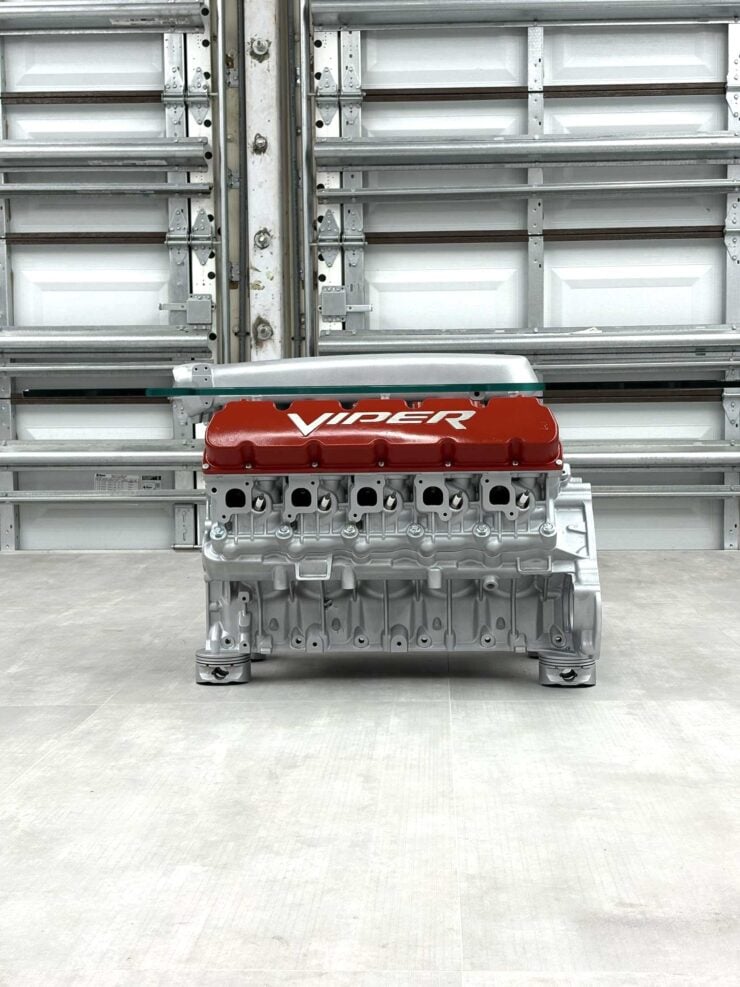
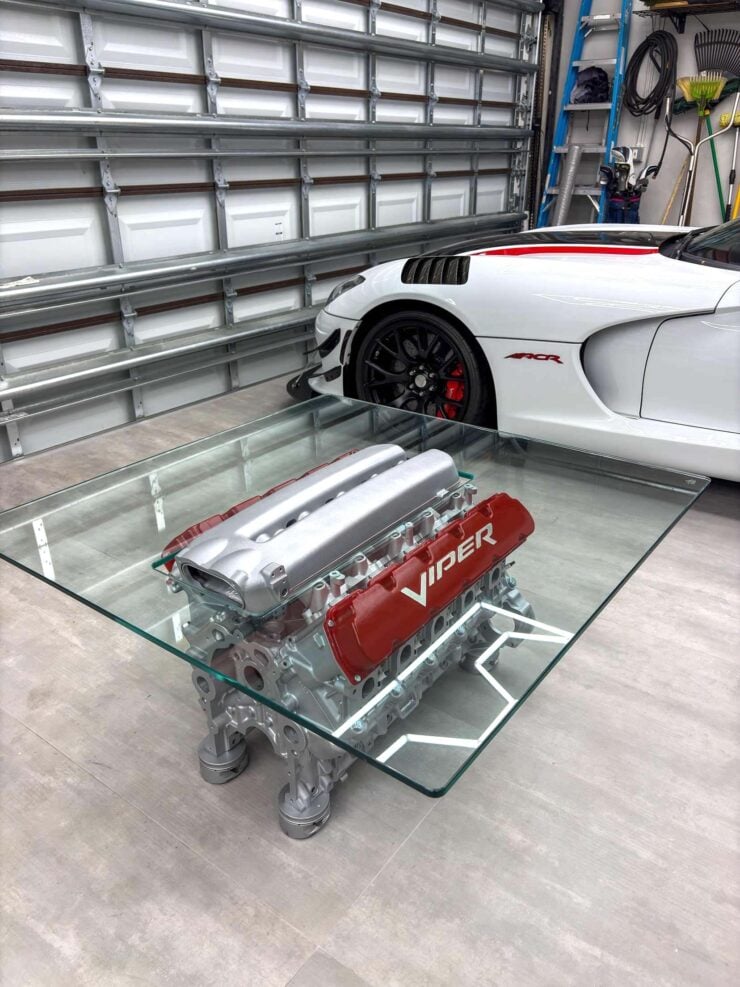
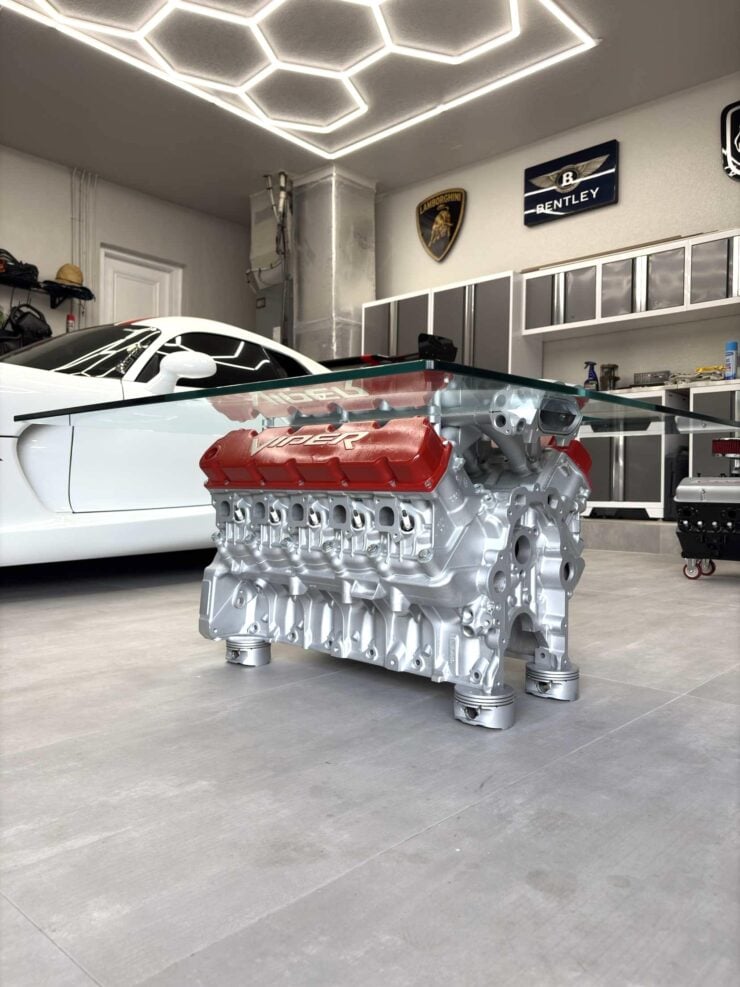
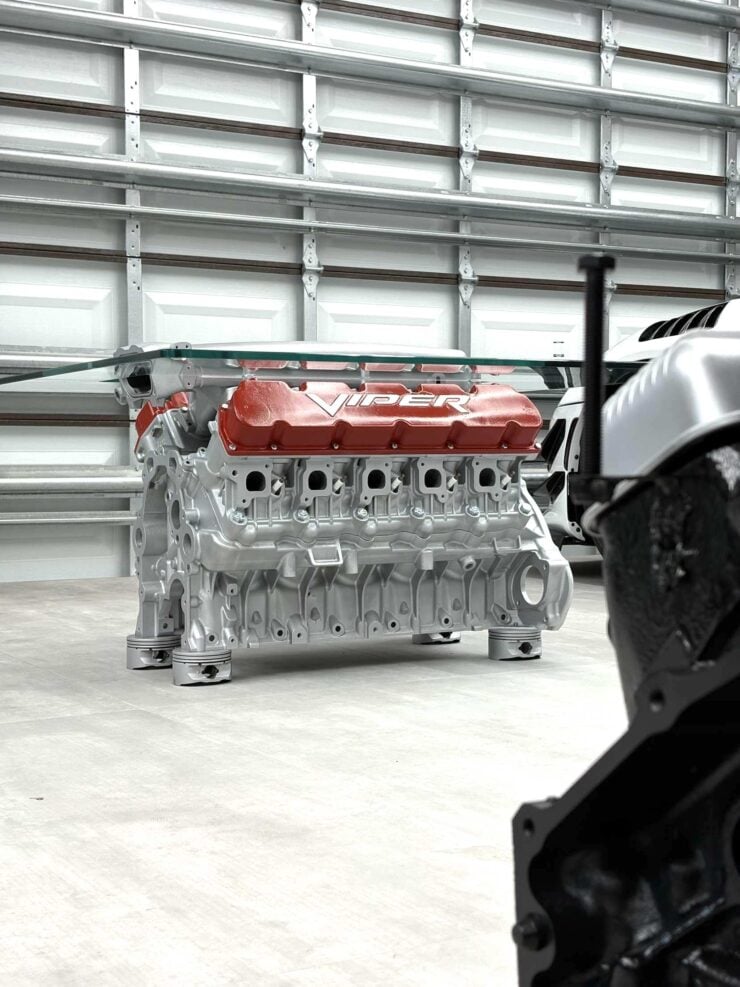
Images courtesy of Bring a Trailer

